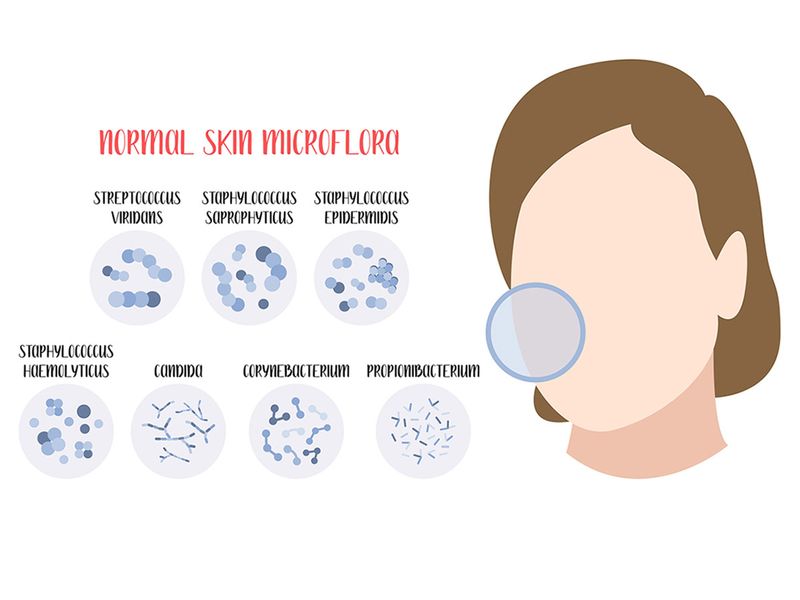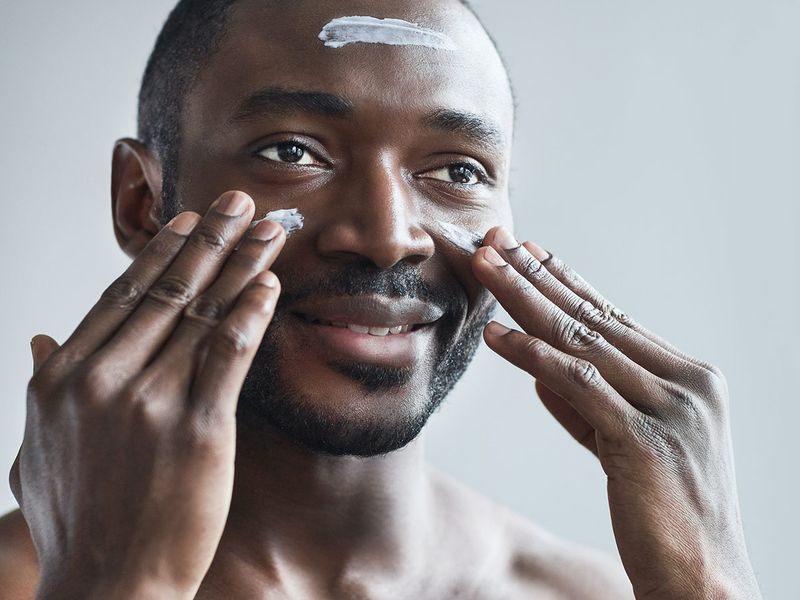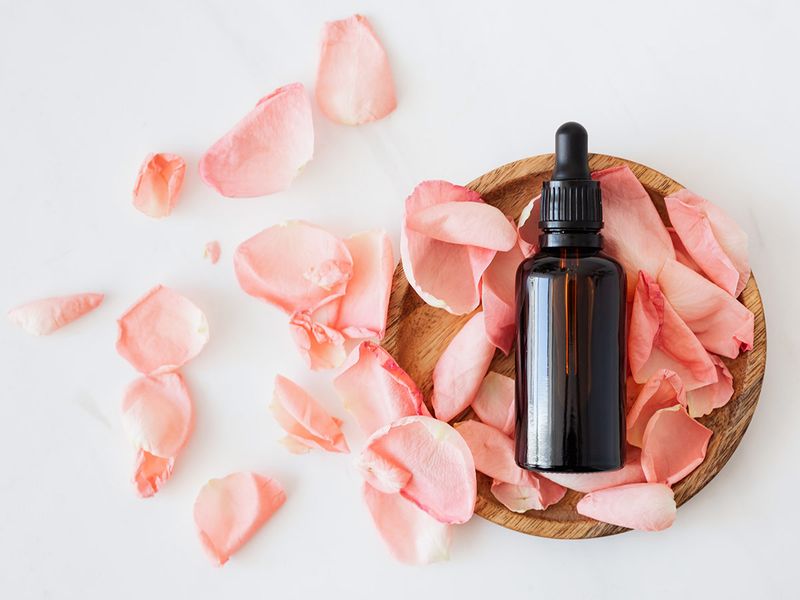
You’ve definitely heard of eating probiotic kimchi for gut health, but what about your skin microbiome?
Beloved of fermented food enthusiasts, probiotics, hailed as ‘good’ bacteria for the gut has gained attention in the skincare industry as well.
Why? Because our skin also has a vast microorganism universe on its surface that is known to cause diseases when imbalanced – and now, a wide range of skincare products today have ‘probiotic’, ‘prebiotic’ and ‘postbiotic’ ingredients included, touted to rebalance the skin, reinforce its barrier and fight off pathogenic bacteria – just how it does in the gut.
For bacteria-caused acne for example, can applying probiotics directly be the answer?
We speak to Dr Lilly Jose, specialist dermatologist with more than 33 years of experience, at NMC Royal hospital, Sharjah and Dr Smruti Manikandhan, DHA (Dubai Health Authority–licensed) specialist dermatologist at Dubai-based Sultan Al Olama Medical Center to find out.
Healthy microbiome, healthy skin

There are between 10,000 to 1,000,000 bacteria growing in a rich and diverse flora on every square centimeter of your skin, as per MDedge dermatology – and what’s more, these trillions of microorganisms, which also includes viruses and fungi, are actually central to the health of your skin.
Dr Jose explains, “It is our protective force, like a military – protecting our skin from other pathogenic bacteria. When these bacteria come, there is not enough space to occupy, it is already occupied by these organisms.
“Normal, healthy skin has got enough – for skin diseases like rosacea, atopic dermatitis, seborrheic dermatitis, the microbiome may be altered or affected.” Our skin barrier can also be destroyed when we overwash, or use too many antibacterial formulations – such as our frequent handwashing during the pandemic, explains Dr Jose, which led to a rise in dermatitis.
The skin’s microbiome and gut’s microbiome have been so strongly linked that dermatologists prescribe oral probiotics for the gut as treatment for such skin diseases.
There are not enough trials for topical probiotics

Probiotics are ‘live microorganisms which, when administered in adequate amounts, confer a health benefit on the host,” according to the World Health Organisation. The idea of applying these on skin goes back to the early 1900s, when a 1912 study published in the Journal of Cutaneous Diseases first talked of ‘topical bacteriotherapy’ for skin.
Since then, a number of small studies published in the Journal of Investigative Dermatology, Clinical, Cosmetic and Investigational Dermatology amongst others – found anti-inflammatory and anti-microbial benefits. Dr Jose adds that reinforcing the barrier, balancing the skin pH and more, are some benefits also being studied.

At the moment, there are no particular studies showing strong evidence for this – if you look at probiotics in skincare, it is not authentic yet. There are a lot of online and OTC (Over The Counter) products that talk about it, but they are not validated yet.
A 2021 review published in the Journal Dermatology and Therapy, also concluded that applying probiotics topically can also be a protective shield by inhibiting sites on your skin where other pathogens could bind as well.
However, Dr Manikandhan says, “At the moment, there is no particular studies showing strong evidence for this – if you look at probiotics in skincare, it is not authentic yet. There are a lot of online and OTC (Over The Counter) products that talk about it, but they are not validated yet.”
Dr Jose adds, “We have established the effectiveness in the gut, but in the skin it is still in the preliminary research stage.” She says that only in case of chronic non-healing of wounds, they may add probiotics on the wound to aid healing and repair the damaged skin barrier. In fact, a 2020 review of previous studies of this topic published in the International Wound journal concluded that although topical probiotics showed efficacy – there were unanswered questions, such as:
What live bacteria is actually in your product?

That’s another reason why you shouldn’t fully trust skincare with probiotics. In one way, applying probiotics is exactly as gross as it may be to some – because you’re placing live bacteria on your skin, and there are no standardised worldwide regulations on what type to use, how much of it you need and the storage conditions. What if there’s bad bacteria lurking in there?
Dr Jose says, “Because the marketing is not regulated, most of these skincare products may not be produced in sterile conditions, and if they add preservatives, it may kill these bacteria as well.
“These should be produced in strict conditions and these should contain certified amounts of bacteria – there should be a control. We don’t know whether there is a pathogenic bacteria.”

Because the marketing is not regulated, most of these skincare products may not be produced in sterile conditions, and if they add preservatives, it may kill these bacteria as well.These should be produced in strict conditions and these should contain certified amounts of bacteria.
Dr Manikandhan adds, “Actually at the moment, it is not feasible.” She explains that these three crucial factors are still not agreed upon:
• The type of strain needed that is most effective
• Exactly how much concentration or dosage of bacteria we would need, in the cream and for application, for skin benefits
• How far this bacteria will be alive in a particular medium.
She says, “You can’t have live bacteria in the cream because of the storage issues.”
Prebiotics fuel probiotic bacteria growth

Dr Jose says, “Prebiotics such plant fibres, for example, act as food for probiotic bacteria – it will stimulate its growth.” She adds that in our diet, this translates to foods such as bananas, oats, onions, garlic, legumes and more.
Here as well, there is no evidence for use. Dr Manikandhan says, “Prebiotics in skincare is misleading.”
In fact, according to news-medical.net, the most widespread bacteria groups on skin don’t actually have genes that produce enzymes that can digest and make these prebiotics useful.
However, some postbiotics are established

While prebiotics and probiotics are still in the gray zone, this particular ingredient has actually already been in our skincare world for a while. Remember lactic acid and glycerol?
Dr Jose explains, “Postbiotics are non-viable bacteria products or the metabolic by-products of probiotic bacteria. These are produced during the fermentation process – and include proteins, enzymes, peptides, polysaccharides.” These mean cell components of probiotics, sometimes killed bacteria or the chemicals that they produce.
“These are nonactive, that is why it can be formulated safely into a cream,” says Dr Manikandhan.
She adds, “There’s no harm in a postbiotic, but for live bacteria, we need more trial runs to base our findings. The only arena we have now is the postbiotic. If killed bacteria are used, with proper studies and trials done - it may actually help in improving the skin barrier functioning, it can be used as immunomodulating a particular skin response if a proper one is used. The concept of it being used in acne, rosacea, psoriasis eczema – the potential is there but there needs to be more trials amongst humans.
“Immunomodulating is the response of the skin to a triggering factor – such as dust that can irritate eczema. Using a postbiotic can to some extent reduce to some extent the hyperreactiveness – as it improved the skin barrier and because the penetration is minimal.”
But, do be cautious when you come across products marketed solely as ‘postbiotic’, as although certain postbiotic ingredients are used worldwide, it is for their specific traits and not because they are byproducts of probiotics.
Dermatologists look forward to a probiotic future

Simply put – the verdict is not in yet. Despite all the cheery ‘probiotics rebalance your skin!’ statements circulating online, there isn’t enough evidence or clarity on the topic, so be wary. Very wary.
However, it could herald the future. Dr Manikandhan says, “It is a promising field - it is something we are looking forward to. For the skin microbiome, if we can improve the good bacteria, then it will definitely help in the health of the skin.
“Especially as rosacea, gut, acne, psoriasis, atopic dermatitis are linked with the gut also – which is why we are expecting that when the studies come out, it will be an asset in our treatment. It will be a revolution for sure.”
In the meantime, you can always keep your gut happy to support your skin’s microbiome.













